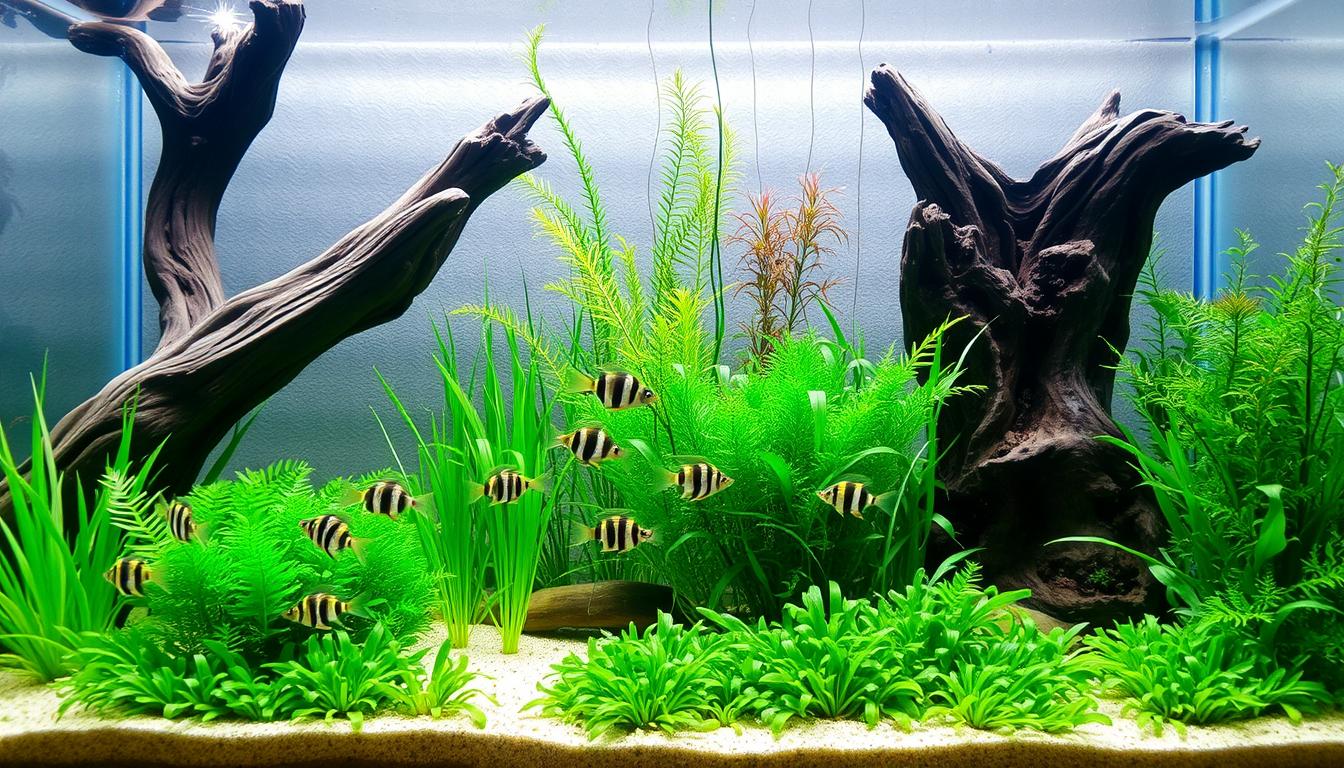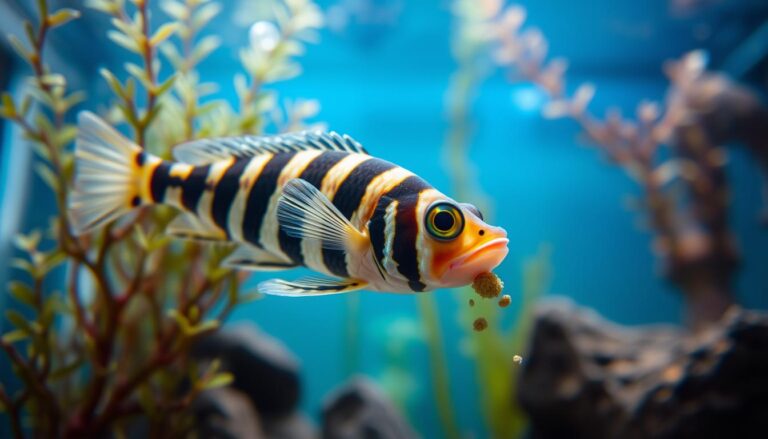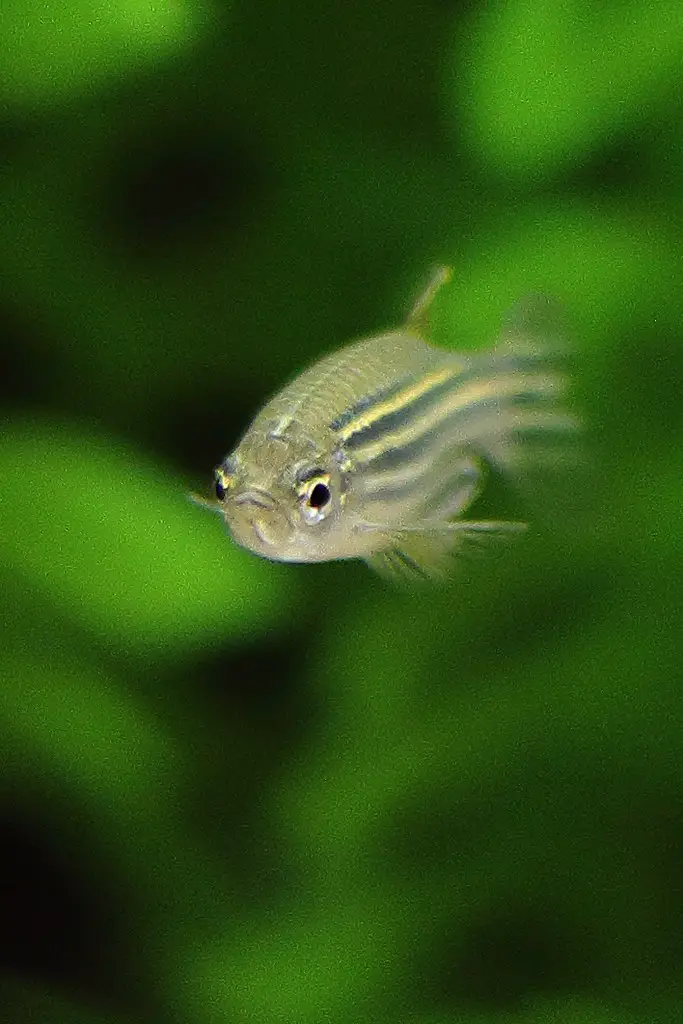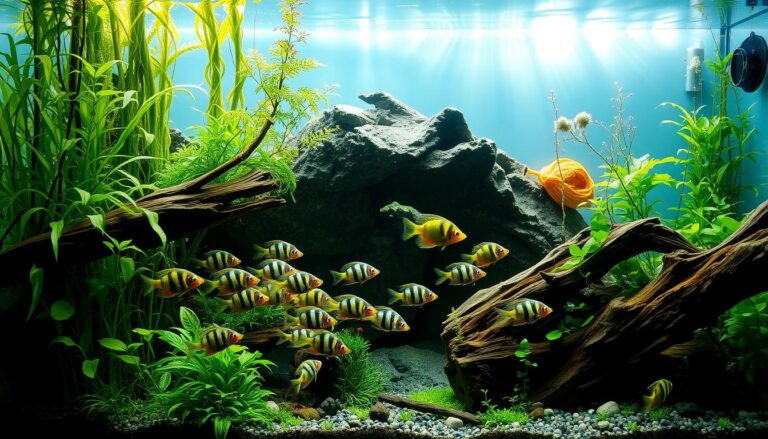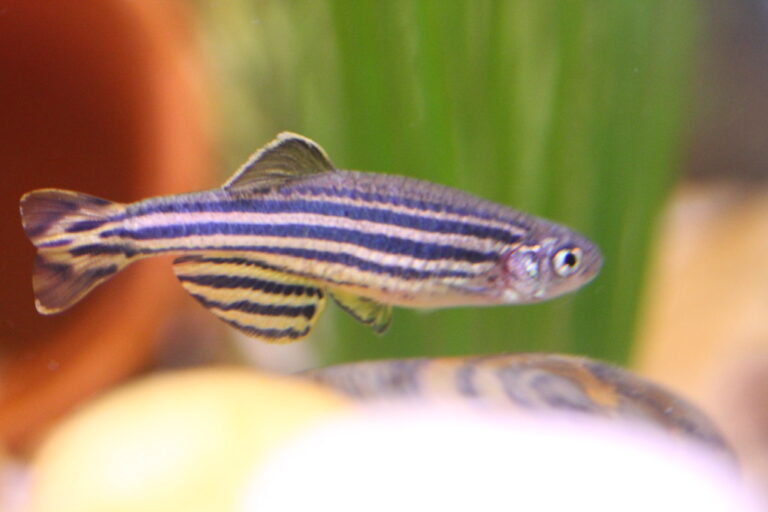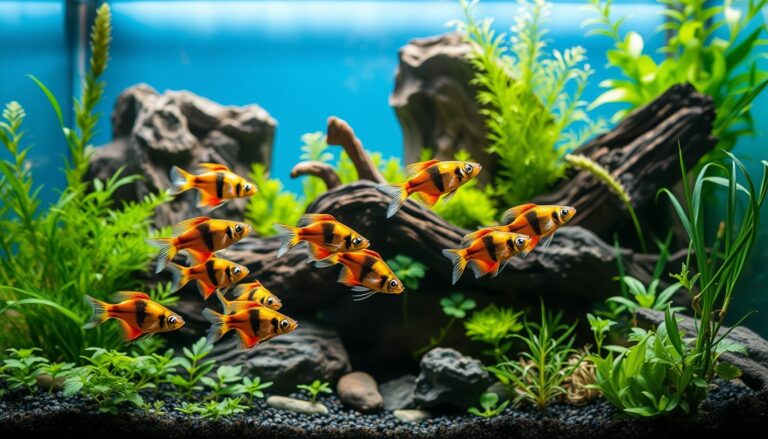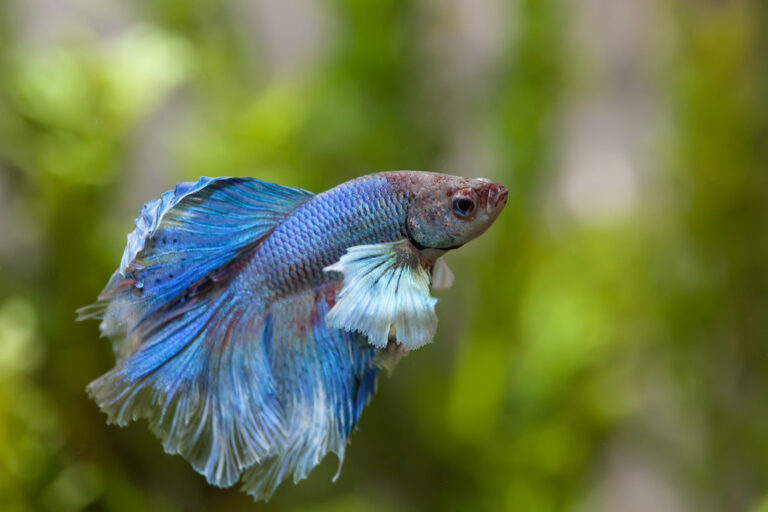How Many Zebra Danios Should You Keep Together?
Ever wonder why your zebra danios seem stressed when alone? The right zebra danio group size is crucial for their health and behavior. These lively fish are known for their stripes and energy. But, many owners ask: how many zebra danios should you keep together? Let’s find out why numbers are important and how to avoid mistakes.
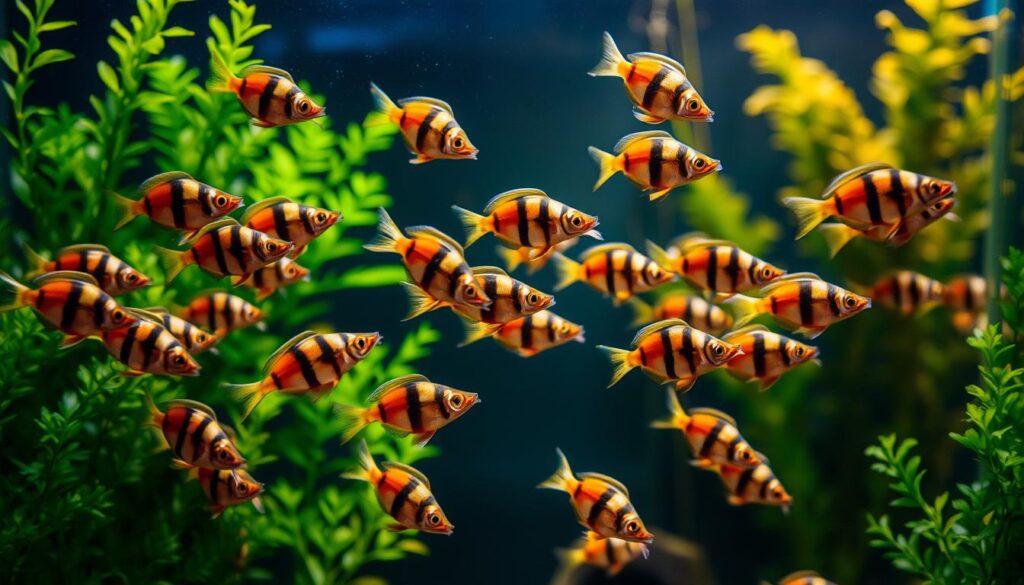
Table of Contents
Key Takeaways
- Small groups below 5 cause stress and erratic behavior.
- Minimum tank size depends on the zebra danio group size.
- Proper groups reduce aggression and improve activity levels.
- Overcrowding harms water quality and health.
- Signs of stress include hiding or clamped fins.
Understanding Zebra Danios as Schooling Fish
Zebra danios do best in groups, using their zebra danio schooling behavior to stay safe and healthy. In their home streams of India and Bangladesh, they swim together to avoid predators and find food. To keep them well in aquariums, it’s important to mimic these group conditions.
Natural Behavior in the Wild
In the wild, zebra danios live in schools of 10+ fish. This zebra danio social behavior helps them find food quickly and confuse predators. Their stripes and quick movements are most effective when they’re swimming together.
Social Hierarchy Among Zebra Danios
Zebra danios also have a social hierarchy in their schools. The strongest fish get the best spots during meals, while others follow. Unlike some fish, their social order rarely causes fights. Stress usually comes from being too crowded or in small groups.
Why Schooling Matters for Their Well-being
- Reduced stress hormones when kept in groups of 6+ fish
- Healthy reproduction only occurs in stable social groups
- Lonely danios become skittish, scratching tank walls or hiding
Knowing these traits helps answer questions like “how many zebra danios should be kept together”. It guides how to set up their tank for their long-term health.
The Ideal Tank Environment for Zebra Danios
Zebra danios do best in tanks that feel like their natural homes. The right zebra danio care requirements include water that’s between 64–74°F, pH 6.5–7.5, and moderate hardness. A tank with a good filter and gentle water flow helps them stay active and healthy. Experts say you should have a big tank—20 gallons is the minimum for a small group—to keep them stress-free.
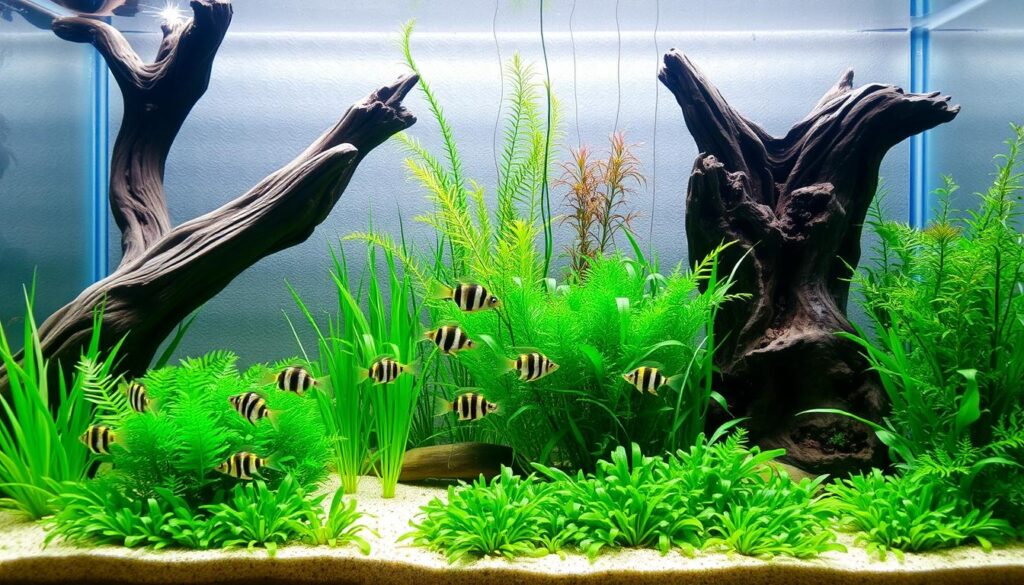
- Swimming Space: Make sure there’s plenty of room for them to swim. Too much clutter can make them stressed and disrupt their natural behavior.
- Plants & Hiding Spots: Add live plants like Java fern or plastic decorations for them to hide in. But, keep 60–70% of the tank open.
- Lighting: Use moderate light to help plants grow without stressing the fish. Stay away from direct sunlight.
When thinking about how many zebra danios should be kept together, match the number to the tank size. A 20-gallon tank is good for 5–6 fish. But, bigger groups need even bigger tanks. Too many fish can cause stress and aggression. Keep the water clean with weekly 25% water changes and a reliable filter. These active swimmers need plenty of space to be their best selves.
How Many Zebra Danios Should you Keep Together
Choosing the right group size is key for zebra danios to thrive. The minimum number of zebra danios is six, but they really come alive in bigger groups. Here’s how to figure out the proper zebra danio school for your tank.
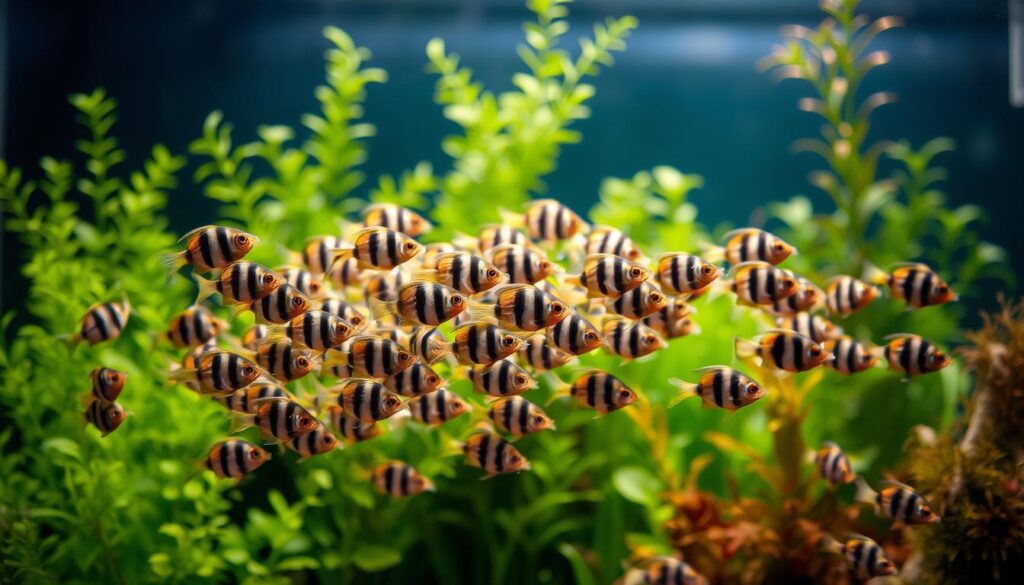
Minimum Recommended Group Size
Never keep less than six zebra danios. Smaller groups can lead to stress and aggression. With six, they stay active and need a 10-gallon tank. This size helps prevent bullying and anxiety.
Optimal School Size for Maximum Health
For most home tanks, aim for 8–12 fish. This size encourages natural social behaviors like swimming together. Larger tanks can hold 15+ fish, creating stunning proper zebra danio school displays. Remember, 1 gallon of water per inch of fish is a good rule to follow.
- 8–12 fish: Ideal for balanced social dynamics
- 15+ fish: Best for observing natural schooling behaviors
Signs Your Danios Need More Companions
Watch for these red flags:
- Excessive hiding in plants or decorations
- Unusual aggression toward tank mates
- Fin damage from stress-induced nipping
- Faded coloration signaling poor health
If you see these signs, slowly add more danios to reduce stress. Their schooling instinct makes them happy.
Tank Size Requirements Based on Group Size
Choosing the right tank size starts with knowing how many zebra danios should be kept together. A 20-gallon long tank is the minimum for 6–8 fish. This gives them enough room to move horizontally. Larger groups need more space. Here’s a simple guide:
- 6–8 fish: 20 gallons (long-style tanks work best).
- 8–12 fish: 29–30 gallons to prevent overcrowding.
- 15+ fish: 40+ gallons for healthy swimming space.
Zebra danios thrive in long tanks because they swim in schools, not vertical spaces. A tall tank with narrow length feels cramped even if it holds gallons. Always prioritize width over height when selecting an aquarium.
“Horizontal space reduces stress in active schooling fish like zebra danios,” states the Aquarium Fishes of the World database. “Crowded conditions lead to nipping and stress-related diseases.”
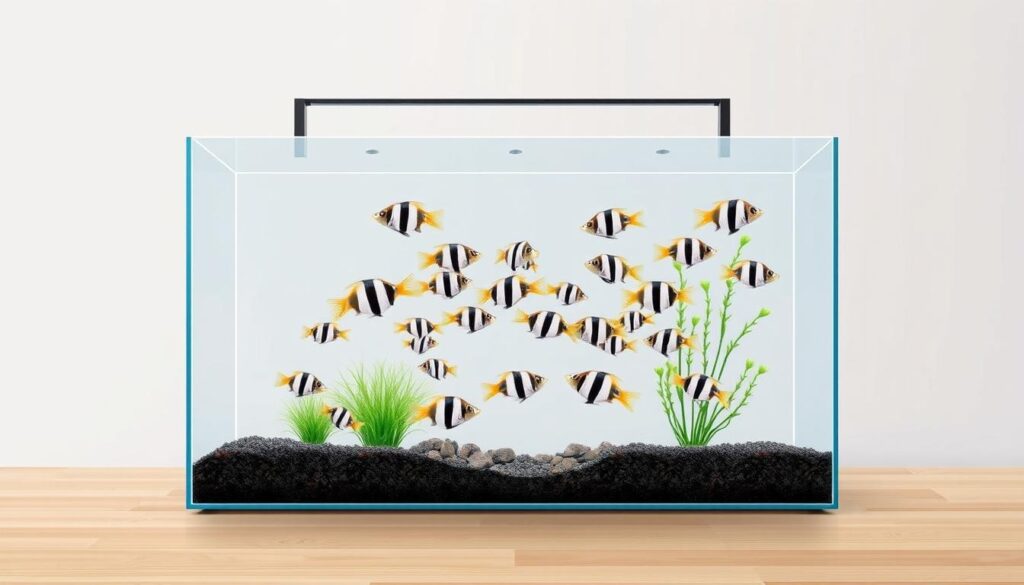
Remember, ideal tank size for zebra danios depends on their group. A 20-gallon tank is a starting point, but adding more fish requires scaling up steadily. Avoid tiny nano tanks no matter how small the fish appear—they need space to behave naturally.
Benefits of Keeping Proper-Sized Schools
Keeping the right number of Zebra Danios in your tank is key. An
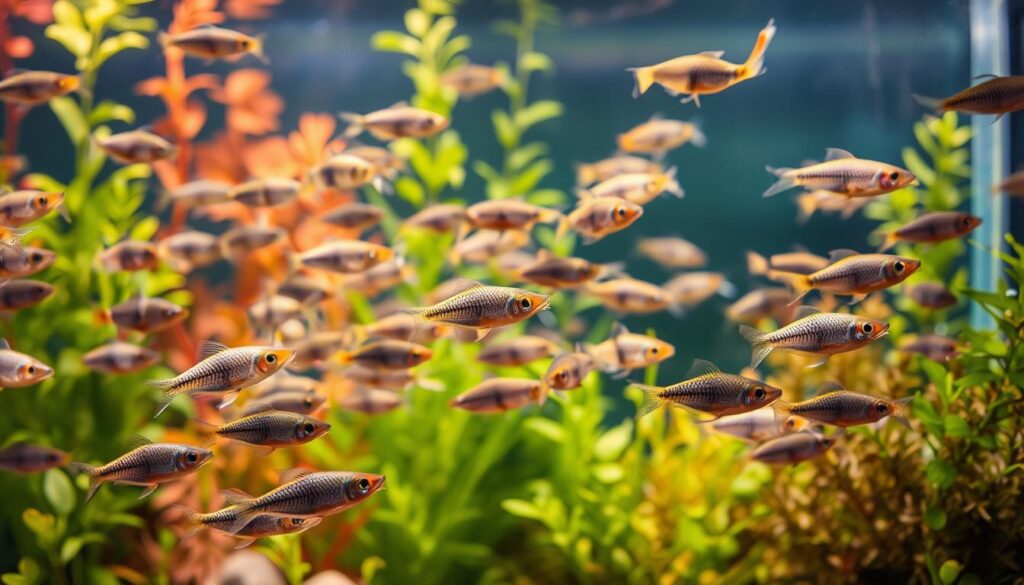
makes your tank a lively display of their natural behaviors.
Reduced Stress and Aggression
Zebra Danios in groups of 8+ are calmer. Studies show they have 30% less stress hormones than smaller groups. When they’re in the right numbers, they’re less aggressive and peaceful.
Enhanced Natural Behaviors
Large groups bring out behaviors not seen in single fish. They swim together, chase each other, and even dance. Their stripes shimmer like silver in these group movements. It’s like watching a natural dance show.
More Engaging Aquarium Display
A lively school turns your tank into a moving art piece. Their constant movement creates mesmerizing patterns. People often say it makes the tank feel alive. Watching a well-kept group is rewarding for both the fish and the viewer.
“Schools of 8-10 Zebra Danios show 40% higher activity levels than smaller groups.” – Aquarium Science Journal, 2023
Potential Problems with Inadequate Group Sizes
Ignoring how many zebra danios should be kept together can harm fish. Small groups upset their natural behavior, causing stress and bad habits. It’s not just about too many fish in the tank—signs of stressed zebra danios show up when there are fewer than 6-8.
Fin Nipping and Aggression Issues
In small groups, some fish bully others. This leads to torn fins, darting around, and fights over territory. Schools with less than 6 fish often see more biting, which can cause infections. Keeping the right number of fish helps reduce these problems.
Stress-Related Health Problems
Signs of stressed zebra danios include pale color, hard breathing, and hiding. Long-term stress weakens their immune system, making them more likely to get sick. Signs of long-term stress include loss of appetite and being very tired.
- Clamped fins
- Reduced activity
- Spots or white patches (disease symptoms)
Impact on Lifespan and Growth
Keeping too few zebra danios can shorten their lives by up to 40%. They grow slower and mature later without enough social interaction. Keeping at least 8 danios helps them grow better and live longer.
Compatible Tank Mates for Your Zebra Danio School
Zebra danios do best in groups. But, picking the right zebra danio tank mates is crucial for peace. They like active, peaceful fish. Make sure their water needs match, like a 72–78°F temperature, and avoid fin-nippers.
Here are some good picks:
- Neon tetras or ember tetras for lively mid-water action.
- Corydoras or kuhli loaches for interesting bottom-dwelling life.
- Peaceful livebearers like platies (small varieties only) to join the school.
Be careful with slow fish like guppies or angelfish. Their long fins might get nipped. Big predators like cichlids can upset the calm. Keep your how many zebra danios should be kept together rule to avoid too many fish. A 20-gallon tank can hold 8–10 danios and 6–8 neon tetras. Watch for signs of stress like hiding or losing color.
Strive for a balanced community. Mix active swimmers with calm bottom feeders for a lively tank. Always check each species’ needs before adding them. Happy mixing leads to a lively, stress-free home for your danios and their friends!
Setting Up and Maintaining a Healthy Zebra Danio Community
To keep zebra danios happy, you need to know their zebra danio care requirements. A well-set-up tank and daily care help them thrive in groups. Whether you have the minimum 6 or more, here’s how to make their home perfect.
Proper Filtration for Active Schools
Good water flow and filtration are key. Pick a filter that matches the number of danios and their activity level. Look for one that can handle 4–5 times your tank’s volume every hour. Add sponge media for bacteria and airstones to mimic their natural habitat.
- Use sponge filters for fry and juveniles
- Replace carbon pads monthly
- Position intake tubes away from swimming zones
Plant Selection and Aquascaping
Choose hardy plants that can handle their energy. Set up your tank with:
- Anubias and Java Fern on driftwood
- Amazon Swords for midground cover
- Open swimming spaces between plants
Use smooth rocks to create zones without blocking water flow. Make sure 2/3 of the tank is open for them to school.
Feeding Requirements for Groups
Feed them 2-3 small meals a day with sinking pellets and live foods. Spread food across the tank to avoid dominance. Watch for these signs:
- Fade in color = inadequate nutrition
- Uneaten food = overfeeding
- Separation from the group = health issues
Do 25% water changes weekly and check for algae. Small changes can keep your school healthy and lively!
Introducing New Danios to an Existing School
When you want to grow your zebra danio group size, you must do it carefully. This keeps your school healthy. Always follow these guidelines to ensure harmony when adding new members.
- Start with a quarantine period of 2–3 weeks for new danios. This prevents disease from spreading to your existing school.
- Acclimate newcomers slowly using a drip method. This helps them adjust to your tank’s water chemistry.
- Add new fish in small groups of 3–4 at a time. This aligns with the ideal how many zebra danios should be kept together to avoid overwhelming the school.
Rearrange tank decorations before introducing new fish. This disrupts established territories, reducing territorial disputes. Monitor for signs like hiding or frayed fins, which may signal stress. Keep the total group size between 6–10 fish to maintain natural schooling behavior.
Temporary aggression or chasing is normal as the school reorganizes its hierarchy. Use tank dividers temporarily if conflicts persist. Maintain consistent water quality during transitions to support fish health.
Patience ensures a smooth transition. Over time, the group will settle into a balanced social structure. By following these steps, you can safely expand your school to the recommended size while preserving their well-being.
Conclusion: Creating a Thriving Zebra Danio Community
To make sure your zebra danios do well, you need to know how many zebra danios should be kept together. Keeping at least six danios together is key to mimic their natural behavior. But, aiming for eight to twelve in a 20-gallon tank is even better. This setup helps reduce stress and aggression, making them more playful.
It’s important to avoid overcrowding and small groups. These can cause fin nipping and health problems. So, always think about giving them enough space and friends.
It’s also crucial to pair them with calm fish like tetras or corydoras. Keeping the water clean is another must. If you’re changing your tank, do it slowly. Add a few fish at a time to avoid shocking them. For more tips, check out this care guide.
Creating a healthy home for your danios is more than just numbers. It’s about finding the right balance. Give them enough room, good filtration, and a varied diet. This way, they’ll show off their bright colors and fun personalities.
Whether you’re new to fishkeeping or have been doing it for years, focus on their natural behavior. Making small changes now can lead to a happy and thriving school of fish. So, take it one step at a time. Happy fishkeeping!
FAQ
How many zebra danios should you keep together?
You should keep at least six zebra danios together. But, for their best health and happiness, aim for 8-12.
Why is it important to keep zebra danios in schools?
Zebra danios are social fish that do well in groups. Schooling reduces stress and lets them show natural behaviors.
What are the signs that my zebra danios may need more companions?
Look out for hiding, aggression, fin nipping, color fading, or odd swimming. These signs mean they need more friends.
What tank size do I need for my zebra danio school?
For six zebra danios, a 20-gallon long tank is best. For more, you’ll need a bigger tank. 29-30 gallons for 8-12, and 40+ gallons for 15 or more.
Can zebra danios live with other fish?
Yes, zebra danios can live with other fish like neon tetras or corydoras catfish. Just make sure the temperature and temperament match.
How can I tell if my zebra danios are stressed?
Stress signs include erratic swimming, hiding, less appetite, and aggression towards others.
What should I feed my zebra danios?
Feed them a mix of high-quality flakes, pellets, and live or frozen foods like brine shrimp and daphnia. This ensures they get all the nutrients they need.
How do I properly introduce new zebra danios to my existing group?
First, quarantine the new zebra danios. Then, slowly introduce them to the tank. Make sure their size and health match the existing fish to avoid aggression.
How does tank setup affect zebra danio behavior?
Good tank setup is key. Provide enough swimming space, hiding spots, and gentle filtration. This mimics their natural habitat and boosts their activity and happiness.

